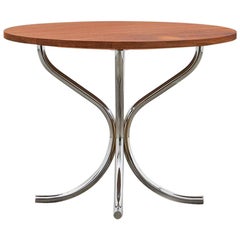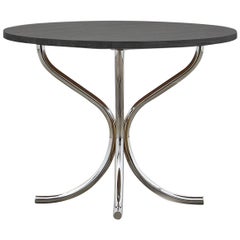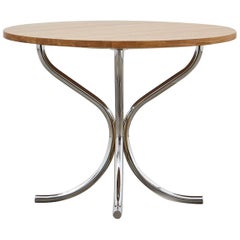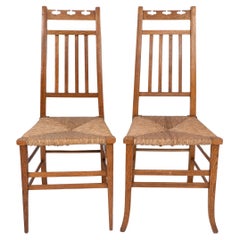Ph Lounge Table
2010s Danish Bauhaus Coffee and Cocktail Tables
Chrome
2010s Danish Bauhaus Coffee and Cocktail Tables
Chrome
2010s Danish Bauhaus Coffee and Cocktail Tables
Chrome
People Also Browsed
Vintage 1950s Italian Mid-Century Modern Dining Room Chairs
Fabric, Ash
20th Century English Arts and Crafts Side Chairs
Rush, Oak
Mid-20th Century Dutch Mid-Century Modern Dining Room Chairs
Steel
Early 20th Century American Romantic Dining Room Chairs
Wrought Iron
Vintage 1980s American Side Chairs
Leather
Vintage 1920s French Neoclassical Dining Room Chairs
Giltwood
Vintage 1970s Dutch Mid-Century Modern Dining Room Chairs
Metal
Vintage 1960s Danish Mid-Century Modern Dining Room Chairs
Oak
Vintage 1940s Danish Scandinavian Modern Dining Room Chairs
Beech
Vintage 1960s Danish Mid-Century Modern Side Tables
Teak
Vintage 1950s French Mid-Century Modern Side Chairs
Vintage 1970s Mid-Century Modern Coffee and Cocktail Tables
Chrome
Late 20th Century Chinese Hollywood Regency Dining Room Chairs
Metal
Vintage 1950s Austrian Side Chairs
Metal
2010s American Mid-Century Modern Coffee and Cocktail Tables
Brass
Vintage 1950s French Mid-Century Modern Side Chairs
Mahogany, Faux Leather
Ph Lounge Table For Sale on 1stDibs
How Much is a Ph Lounge Table?
Poul Henningsen for sale on 1stDibs
The name Poul Henningsen is synonymous with the best and most innovative modern Scandinavian lamps and other lighting. The Danish designer created a signature vocabulary of fixtures with tiered and layered shades in sculptural arrangements that are at once naturalistic and geometric.
Henningsen grew up in a town on the outskirts of Copenhagen and studied architecture at the Technical University of Denmark. He would become a noted art critic, journalist and screenwriter, but his first love was lighting design.
Henningsen’s childhood home was illuminated by oil lamps. When his family switched to electrified lighting, he was alarmed and repelled by the harsh glare cast by an incandescent bulb, and in his late teens he began conducting quasi-scientific experiments to measure which materials and methods best diffused or reflected light to give it a warm brightness. His work came to the attention of the lighting-fixtures firm Louis Poulsen, which sponsored the development of a prototype lamp. The design won a gold medal at the 1925 Paris Expositions Internationales des Arts Decóratifs et Industriels Modernes — from which the term Art Deco derives. The lamp, whose three-part shade is said to be inspired by the arrangement of a dinner plate atop a soup bowl atop a teacup, became the basis for Henningsen’s most successful design, the PH 4/3 desk lamp.
All told, Henningsen would design some 100 lighting fixtures in his career. Some of his most notable creations are hanging lamps, which include the Septima (1929), a pendant composed of seven graduated frosted-glass layers; the Spiral (1942), made of a single ribbon of enameled aluminum; and the Artichoke lamp (1958), whose 70 glass or metal fins in a staggered and graduated arrangement on a central steel frame resemble those of its namesake. The last is likely Henningsen’s masterwork and an icon of mid-20th-century design. Like all Henningsen lighting designs, it is striking, sculptural and — thanks to his insistence on the primacy of the quality of the light cast — superbly functional.
Find a collection of authentic Poul Henningsen table lamps, floor lamps and other lighting on 1stDibs.
A Close Look at bauhaus Furniture
The Bauhaus was a progressive German art and design school founded by the architect Walter Gropius that operated from 1919 to 1933. Authentic Bauhaus furniture — sofas, dining chairs, tables and more — and the school’s followers married industrial and natural materials in simple, geometric forms. The goal of the Bauhaus was to erase the distinction between art and craft while embracing the use of new technologies and materials.
ORIGINS OF BAUHAUS FURNITURE DESIGN
- Art and design school established in Germany in 1919
- Promotion of a union of art, craft and technology
- Design intended for mass production
- School’s workshops focused on cabinetry, metalworking, typography, textiles and more
- Informed by De Stijl, Constructivism, Art Nouveau, Arts and Crafts, and modernism; influenced mid-century modernism, Scandinavian modernism
CHARACTERISTICS OF BAUHAUS FURNITURE DESIGN
- Emphasis on craft
- Simplicity, order, clarity and a prioritization of functionalism
- Incorporation of geometric shapes
- Minimalist and refined, little to no ornamentation
- Use of industrial materials such as tubular chrome, steel and plastic as well as leather, cane and molded plywood in furniture and other products
BAUHAUS FURNITURE DESIGNERS YOU SHOULD KNOW
- László Moholy-Nagy
- Ludwig Mies van der Rohe
- Anni Albers
- Josef Hoffmann
- Marcel Breuer
- Marianne Brandt
AUTHENTIC BAUHAUS FURNITURE ON 1STDIBS
The name Bauhaus is derived from the German verb bauen, “to build.” Under the school’s innovative curriculum, students were taught the fine arts, such as painting and sculpture, as well as practical skills like carpentry and metalworking.
The school moved from Weimar in 1925 to the city of Dessau, where it enjoyed its heyday under Gropius, then Hannes Meyer and Ludwig Mies van der Rohe. The period from 1932 to 1933 when it operated in Berlin under Mies was its final chapter. Despite its brief existence, the Bauhaus has had an enduring impact on art and design in the United States and elsewhere, and is regarded by many as the 20th century’s chief crucible of modernism.
The faculty roster at the Bauhaus reads like a who’s who of modernist creative genius — it included such artists as Paul Klee, Wassily Kandinsky and László Moholy-Nagy along with architects and designers like Mies and Marcel Breuer, who became known for his muscular brutalist-style concrete buildings in the postwar years. In 1925, while he was head of the Bauhaus carpentry workshop, Breuer gave form to his signature innovation: the use of lightweight tubular-steel frames for chairs, side tables and sofas — a technique soon adopted by Mies and others. Breuer’s Cesca chair was the first-ever tubular steel frame chair with a caned seat to be mass produced, while the inspiration for his legendary Wassily chair, a timeless design and part of the collection crafted to furnish the Dessau school, was the bike he rode around campus.
Bauhaus design style reflects the tenets by which these creators worked: simplicity, clarity and function. They disdained superfluous ornament in favor of precise construction. Seating pieces such as side chairs, armchairs or club chairs for example, were made with tubular metal or molded plywood frames, and upholstery was made from leather or cane. Above all, designs in the Bauhaus style offer aesthetic flexibility. They can be the elements of a wholly spare, minimalist space, the quiet foundation of an environment in which color and pattern come from one’s own collection of art and artifacts.
Today, from textiles to typefaces, architecture, furniture and decorative objects for the home, Bauhaus creations continue to have an outsize influence on modern design.
Find a collection of authentic Bauhaus furniture on 1stDibs.
Finding the Right center-tables for You
An alluring sitting area doesn’t have to be in the exact center of the room, but an antique or vintage center table is a great tool to partition off such an area.
By definition, a center table is a piece of furniture that is placed in the center of a room. Initially these appeared in the foyer or entryway before making their way into the living room. While one might keep seating furniture such as sofas against the walls to avoid limiting movement and closing off space, a center table in the living room can fill this central space without restricting the flow of the room.
One of the purposes of a center table is to anchor the rest of the furniture. It draws the eye to a specific area and invites guests to sit down. When thinking about how you’ll arrange your furniture, a good rule of thumb is to set tables an arm’s length away from seating. For instance, place a coffee table about 18 inches from a sofa so that it is within reach but not too close. In more modern layouts, tables are sometimes placed to the side to leave a large open area for foot traffic.
Because of its central position, a center table is one of the first things people will notice when entering a room. It’s important to consider how a center table can add to a room, as it’s a crucial element for defining the feel and theme of a room. Some center tables are mainly for decor, while others can be a great place to sit around over cocktails and hors d’oeuvres. Center tables are perfect for displaying decorative objects, floral arrangements, books or a cluster of prized antique vases given the prominent position of your table and the attention it will get.
The clean lines and organic forms that we typically associate with mid-century modern center tables means that they will bring a dose of sophistication to a space, and examples from the era can be found in square and round shapes. Wood tables were popular with furniture makers of the period, but versions in glass and marble are also widely available. Because Art Deco designers frequently incorporated ornamental embellishments such as exotic animal hides and veneers in their seating, case pieces and other furniture, your Art Deco center table will likely make a strong statement in any room. Alternatively, if you’re searching for something small and unassuming, Regency tables could be an option for your space.
Find a growing collection of antique and vintage center tables on 1stDibs today.




